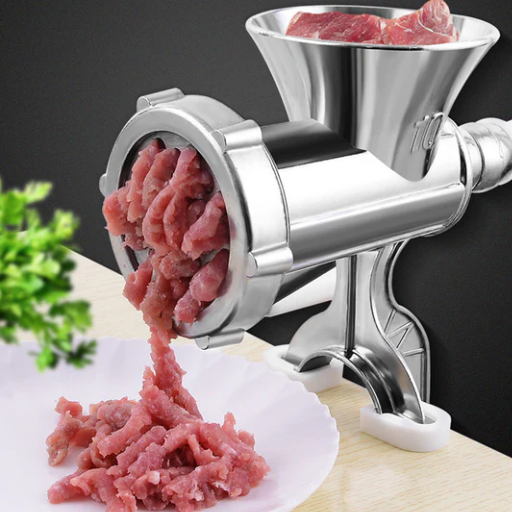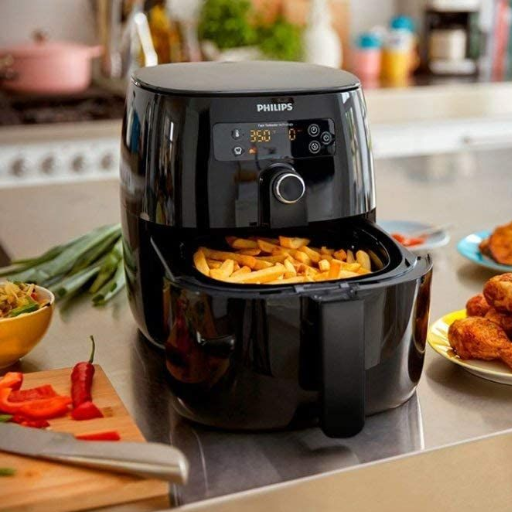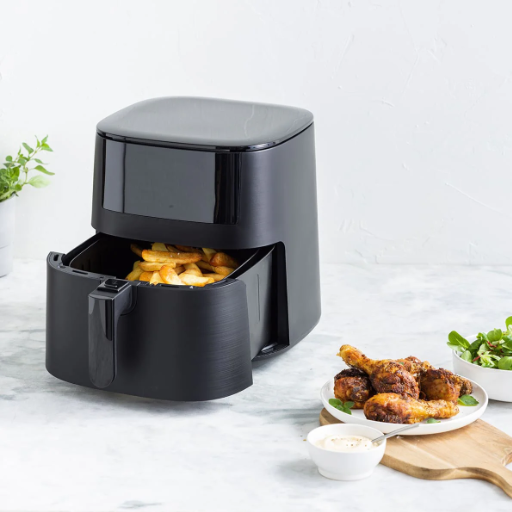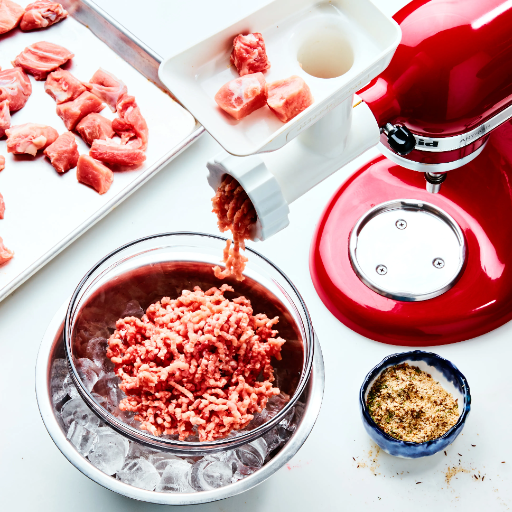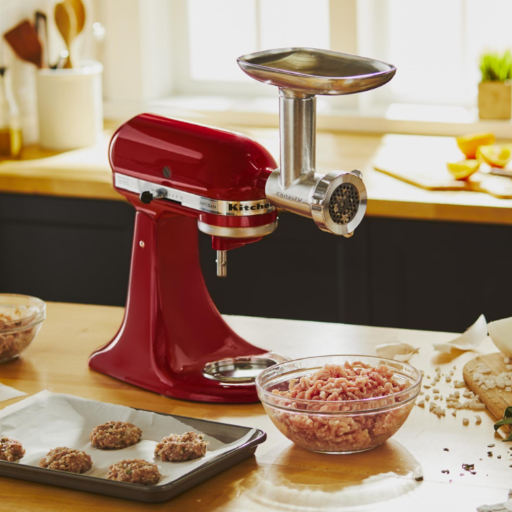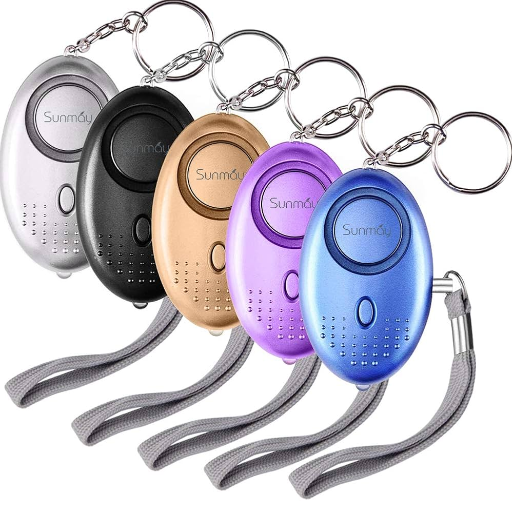To achieve an aesthetically pleasing kitchen, finding the right pots and kettles is vital for functionality and style. These tools are the basis of many meals and a big clue to your cooking style and preferences. This piece aims to assist everyone, both professional chefs in search of work-grade tools and home cooks looking for reliable, multi-functional cookware. We will discuss what pots and kettles best suit your requirements to elevate your cooking experience by covering useful materials, intriguing designs, and remarkable features. Prepare yourself to elevate your kitchen with new additions that are pleasing to the eye and practical at the same time.
What Are the Different Types of Kettles?
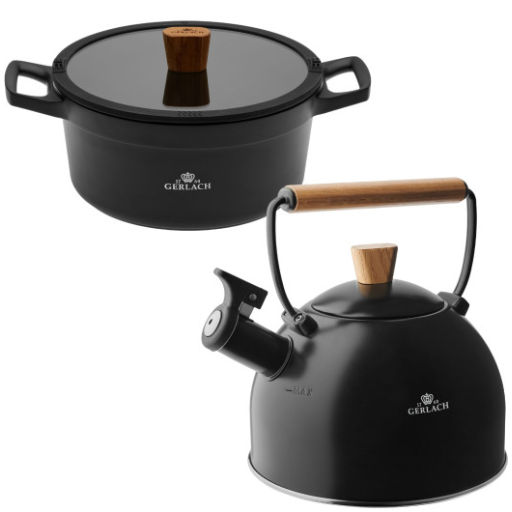
There are several types of kettles, each tailored to different needs and preferences:
- Stovetop Kettles
The traditional kettle is the most straight-forward type – an old-fashioned contraption placed over a flame to boil water. Usually these are made from stainless steel or cast iron which offer fantastic durability. They are quite practical and efficient as they do not require any power source and can be used on any stove top.
- Electric Kettles
Electric kettles are designed with user convenience in mind. Commencing the boil with the cord connected, boiling can be done within seconds and the kettle will shut off automatically afterwards. Even once the kettle is removed the hot water will keep the kettle warm for some time covering features such as changed temperature regulation.
- Gooseneck Kettles
Gooseneck kettles are well known for their long, curved nozzles. They allow for precise control over the pouring water. Thus, they are ideal for brewing specialty coffees or teas.
- Collapsible Kettles
These kettles are silicone which offer heat resistance and can collapse for easy storage. They can be perfect for small kitchens or travelers.
- Glass Kettles
These types of kettles possess a modern design look with transparent parts that allow you to view water as it boils. They are often electric and may include LED lighting.
So, if you are looking to brew coffee or tea at two different speeds, trust that these are the right options for you. Make sure to consider design when choosing between them.
Electric vs. Stovetop Kettles
Each type of kettle comes with its own pros and cons which cater to particular user tastes. Push comes to shove, it all comes down to personal preference. Electric kettles have the benefit of efficiency, burning through the five minute mark when boiling water due to integrated engine parts and their built in element controls. Many users can now make use of modern features which enable them to select the exact temperature for brewing tea or any other specialty drink which requires high levels of precision. The portability of electric stove tops along with their safety features make them even more desirable.
On the other hand, Stovetop kettles are appreciated for their flexibility as well as long lasting durability. These kettles have their own choosers because they take a more old school manual approach to water boiling. The stainless steel or cast iron used in construction allows it to be used on various heating arrangements, whether it be gas, electric, or induction stoves. While their boiling speed may be slow, the rugged build compensates alongside the eye catching timeless design. Nutritionally, heating water in these kettles achieve high levels of reliability and versatility.
Energy efficiency, ease of operation, and maintenance are key considerations when comparing these two. Electric kettles have modern features as well as faster performance, whereas stovetop kettles provide a timeless durable option. Knowing the specific requirements of your kitchen will help figure out which type is more suitable.
Material Choices: Stainless Steel, Glass, and More
- Stainless Steel
Due to its immense value retention, durability and shielding against rot, stainless steel remains one of the most sought after materials for kettles. Electric and stovetop kettles also benefit greatly since stainless steel has high efficiency in conducting heat. Also, the non-reactive surface of the stainless steel ensures that water and beverages will not change in taste. Most modern designs include double-walled Suzuki insulation which boosts the energy efficiency of the kettle while protecting the user from burns when touched.
- Glass
Glass kettles can be borosilicate glass which is heat resistant making it sleek and modern looking. Their modern appearance and the ability to visually monitor the boiling process is important. They can withstand significant temperature changes without breaking. The fact that it is non toxic does not change why it is a great material for glasses, earning it more points. However, glass must regularly be washed to keep its clarity because it becomes easily stained and mark becomes more visible than other materials.
- Plastic
Kettles made from plastic are very light and inexpensive. Most have a heat resistant outer layer which allows them to be touched immediately after boiling, making them incredibly convenient. Widely available BPA free options ease health concerns about chemicals leaching into food. While practical, the longevity of plastic kettles won’t compare to stainless steel or glass. Without proper maintenance, plastic also has a reputation for absorbing odors over time.
- Ceramic
For the traditional lovers out there, ceramic kettles offer a classic design that retains heat for an extended duration. Although they are great thermal insulators, they tend to be heavy which makes them much less portable. While they can be used with water without changing its taste, they are prone to breaking unlike stainless or glass.
- Combining Materials
Certain contemporary kettles mix materials for form and function. A spike example would be a stainless steel kettle with a glass water level window or a plastic handle. These designs aim to blend usability, safety, and looks in a variety of multifunctional designs.
How to Choose the Right Pot for Cooking?
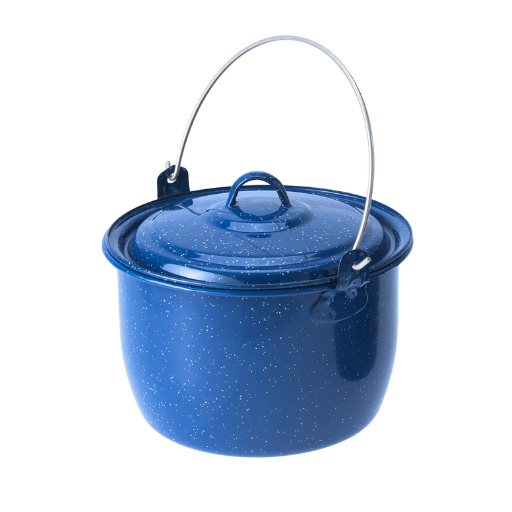
Thinking about cooking pots, the following categories are very useful while shopping:
- Material
- Stainless Steel: Durable, easy to react to different environments, and versatile for cooking.
- Cast Iron: Best suited for maintaining and distributing heat evenly. Great for slow cooking as well as searing meat.
- Non-Stick Coating: Great for cooking with little fat, but requires gentle treatment.
- Copper or Aluminum: Heats up quickly and evenly, but needs lining to prevent reacting with acidic meals.
- Size and Capacity
- Cooking Method
Align the pot’s shape and features with your cooking method. Dutch ovens are heavy and ideal when braising, while a stockpot is preferable for boiling or steaming.
- Durability and Maintenance
Look at the pots that require little cleaning as well as being durable. There is added convenience for the dishwasher-safe options, but items such as cast iron require more care.
- Heat Source Compatibility
Check if the pot you buy matches the stove type. Gas, electric, and induction have different requirements so check for a base that is compatible with induction if needed.
Taking these factors into account will help you find the perfect pot tailored to your preferences while ensuring a reliable cooking tool.
Size and Shape Considerations
When choosing pot size, it is essential to pick one with a capacity that matches your cooking routine. Consider individual-sized portions or small household servings, which only need pots sized from 1 to 2 quarts. Larger families or those who practice batch cooking may need 6-quart or larger options. Furthermore, a pot’s shape is also an important functional characteristic. With some, a cooking pot has no lid. That’s especially useful for certain tasks: sauces cook quickly in shallow, wide pots because flavors evaporates faster; tall, narrow pots are great for soups or boiling pasta since their shape keeps heat in. The latest reviews, along with industry research, suggest that the ratio between a pot’s base diameter and height is critical for distributing heat evenly which, in turn, determines the quality of cooking performed. This showcases that shape is yet another critical aspect in choosing cookware.
What Makes a Good Tea Kettle?
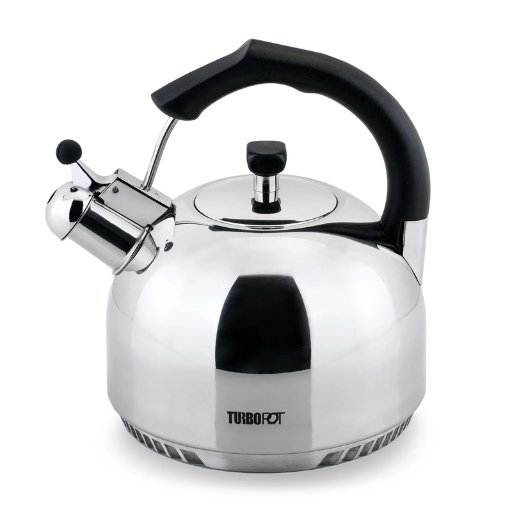
A quality tea kettle is characterized by its material, design, and functionality. Betraying their durability, resistance to rust, and distribution of heat, stainless steel and enamel-coated kettles tops the list. The handle should not get heated up so that the user can hold the kettle safely, the spout should pour smoothly. Also, a good tea kettle should have a whistle which indicates to the user that the water has boiled so that it doesn’t overheat. Electric kettles are best for those who need convenience as they have control over the temperature and boil water quickly according to what needs to be brewed.
Key Features of Quality Tea Kettles
- Materials and Construction
The efficiency and construction determines the tea kettle’s quality. The best tea kettles are often constructed from stainless Steel, borosilicate glass or high grade ceramic. The best materials smoothen usage and are easy to maintain. Stainless steel is easy to maintain. The steel does not rust and is easy to clean. Borosilicate glass can withstand extreme changes in temperature and shows boiling water clearly. This material is great for observation. Even though ceramic kettles are gentle they provide good heat retention and do not stain easily.
- Safety Features
Modern-day tea kettles focus on user safety, adding features such as heat-protective grips made out of silicone and engineered polymers to mitigate the risk of burns. Other safety features on electric kettles may include auto shut-off functions, which turn the kettle off after the water has reached the selected boiling point. These functions are important in minimizing the dangers caused by overheating and unattended boiling.
- Advanced Temperature Control
Electric tea kettles can be programmed to be boiled for certain amounts of time which provides versatility when brewing green tea, oolong, black tea or even herbal infusions. Different types of tea need to be boiled to different temperatures and for true enthusiasts temperature flexibility is a vital feature to have. Multiple temperature presets improve the brewing experience by enhancing the aroma and taste of each infusion, making them suitable for more types of teas.
- Efficiency and Ergonomics
There is an ever-growing focus on energy efficiency such that most modern tea kettles are designed to use less energy while boiling water. Ergonomics come into play with modern lightweight appliances which provide comfort and control with easy-pour spouts and well balanced handles. Such details boost usability, elevating the user experience for people with different preferences and needs.
Maintenance Tips for Longevity
Followed by regular maintenance, the tea kettles will perform optimally over an extended period. Referenced below, are suggested methods for extending the useful life of a tea kettle:
- Regular Descaling
With regards to the heating efficiency along with constituent potential damage, mineral deposits from hard water could accumulate inside the kettle. Mixing equal parts of water and white vinegar, followed by boiling the mixture, will require the kettle to sit idle for 15-20 minutes before rinsing. In areas with extremely hard water, this process is advised to be repeated every 4-6 weeks.
- Avoid Overfilling
Spilling the maximum allowable water can pose a threat to electric kettles. Use electric kettles within the appropriate water level limits to avoid water spilling over during the boiling process, which can spill over and break the electric components. Adding excess water can cause electric components to short-circuit. Following the instructions is highly encouraged.
- Dry After Each Use
Clearing any remaining water after every use should be followed. For the kettle to be wiped with a soft cloth on the kettle’s interior and exterior aids the removal of rust stains and scratches for stainless steel models.
- Inspect and Replace Parts
Check the kettle’s components including the spout filter, lid mechanism, and the stability of the handle. In its electric variation, the power cord of the kettle should also be inspected. Worn parts should be replaced immediately because, with further use, they may pose safety risks.
- Use Filtered Water
Using distilled or filtered water improves performance and reduces mineral buildup. Research suggests that using filtered water has the potential to limescale buildup by 40 percent which means less frequent descaling is required.
These illustrated maintenance techniques will help heighten the lifespan of tea kettles along with safety, efficiency, and performance.
How to Brew the Perfect Coffee Using a Kettle?
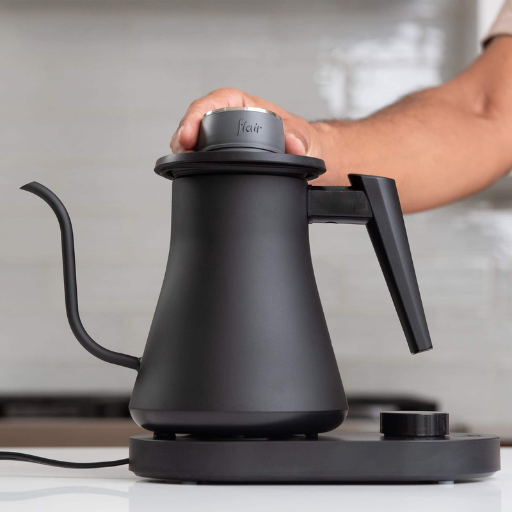
- Measure Your Coffee and Water
For making coffee, a coffee-to-water proportion of roughly 1-2 tablespoons of coffee per every 6oz of water will suffice. This guarantees that flavor extraction will be balanced and consistent. For more coffee per cup, simply scale up the amounts accordingly.
- Heat the Water to the Right Temperature
Begin by placing water in a kettle. Its bubbling point needs to be at 195°F and 205°F in temperature, making it so that it must be cooled down slightly before brewing. Water hotter than that will scorch the coffee while water not hot enough shuts off too many flavors needed to be extracted.
- Choose the Brewing Method
Based on your tasting preference, select a kettle to use with pour-over, French press, or drip Method. Each method’s emphasis on different coffee attributes will please different preferences.
- Pour Evenly and Consistently
For pour over, pour the water in a consistent circular motion starting from outside the coffee grounds. Circular pouring will move coffee oils and fine particles to be suspended in water, improving flavor extraction.
- Allow for Correct Brew Time
Depending on the method you use, the brew time will fall into the 2-5 minute range. Make sure you follow the instructions for your specific chosen method for the best outcome.
Maximize the abilities of your beans and the brewing technique in hand with these easy steps. Enjoy achieving rich, balanced coffee every time.
Choosing the Right Kettle for Brewing
The precision and uniformity in brewing coffee are directly related to having the right kettle, which is why investing in the right humidifier is so critical. For pour-over techniques, gooseneck kettles are for the most part accepted as the best option because their thin spout enables accurate water flow. This water distribution is critical for even moistening of coffee grinds and best extraction. Temperature control kettles are also ideal recommendations for the brewing techniques needing specific temperature control since they hold precise heating requirement of 195-205°F. A kettle with inbuilt thermometer or adjustable heating features guarantee accuracy and reproducibility. The kettle’s material should not be ignored as well; electric kettles are easier to use and heat up quickly while stainless steel models are reliable long-term and don’t rust. When reviewing kettles, volume, convenience, daily use, and ergonomics are other considerations one should pay attention to especially if you plan to make coffee regularly. In the end, purchasing a strong brewing kettle allows you to improve the strive to further improve the quality and consistency of the coffee made.
Tips for Coffee Temperature and Timing
- Optimal Brewing Temperature
Coffee should be brewed at a temperature between 195°F and 205°F (90°C – 96°C). Within this moderate range the coffee can be brewed, flavored and aromatic coffee solubles will versatilly attached to coffee. Hence a tempered warmth ensures the delicate balance. Anything below and 195 will under extract while 205 will highly risk over extraction and could ruin the coffee due to bitterness.
- Preheating Equipment
To increase heat retention during roasting coffee with hot water, warming up as many parts as possible is very smart. A kettle and a thermal coffee carafe will provide less rapid cooling while holding within an ideal logical coffee brewing temp.
- Brew Time Guidelines
Each method has a recommended brewing time.
- Drip Coffee Makers: 4-6 minutes
- Pour-Over (e.g., V60 or Chemex): 2.5-4 minutes
- French Press: 4 minutes
Every method as more or less the described time. However adjust the recommendation based on grind size and flavor preferences.
- Water-to-Coffee Ratio Consistency
Adhere to a coffee-to-water ratio of 1:15-18 (1 gram of coffee to 15- 18 grams of water) while measuring and weighing. Having a precise measurement with a scale helps keep brewing variables in check and guarantees the same outcome every time.
- Temperature Retention After Brewing
Brewed coffee is best served immediately because it starts losing its apricate taste over 180°F (82°C). For slowly sipping, enjoy the taste while still retaining the temperature using insulated carafes.
Following these temperature and timing strategies help enhance the overall coffee experience.
How to Care for Your Pots and Kettles?
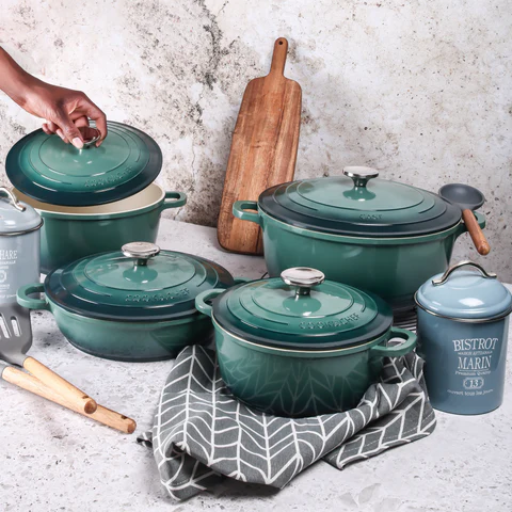
When it comes down to pots and kettles, its maintenance includes the following instructions:
- Regular Cleaning
Every time a pot or kettle is used during the washing stage, warm soapy water should be used for cleansing. This avoids unwanted build up and is cleaning virtually. When cleaning stainless steel pots, avoid using abrasive scrubbers and delicate sponges. Also, be fine so the surface finish is not damaged.
- Descale Periodically
To remove stubborn mineral deposits, fill the kettle with one parts water and white vinegar. By bringing this mixture to a boil, it surely relieves any unwanted residual tastes, ensuring a complete rinse.
- Avoid Overheating
An empty kettle or pot can not be heated. Doing so will warp the material, shortening the overall lifespan of the item.
- Dry Completely
Metals that are uncoated, such as cast iron will start to rust or develop stains simply put, spots. Therefore, after a wash, make sure to dry the items straight away.
Cleaning Tips for Different Materials
- Stainless Steel
Like any metal, stainless steel is beset by the issues of rust, water spots, and discoloring overtime, but standing up to the rigorous day-to-day cleaning, its durability is unquestionable. Wiping the surface with warm water mixed with mild dish soap will do the trick, but using a non-abrasive sponge will work wonders too. You could also try a baking soda-water paste for the stubborn spots that refuse to clear up, but be warned, it’s very easy to over scrub. To complete the work, give the surface a rinse along with a gentle polish with either vinegar or stainless steel cleaner.
- Cast Iron
It avoids using soap because it strips the seasoning. Using cast iron requires hot water and a stiff brush to avoid rust. For stubborn residue, try boiling water in the cookware or a pan which will loosen debris. After scrubbing, drying and putting on a thin layer of oil to prevents oxide getting on it.
- Non-Stick Coated
Gentle treatment is necessary for non-stick surfaces as they may become damaged. Non abrasive sponges or cloths alongside warm water with soap work best for cleaning. Non stick layers can be ruined by high temperatures, harsh chemicals, and even abrasive scrubbers. If food remains on the non-stick coating, it can be soaked before coming and being gently wiped clean.
- Copper
Being highly conductive, copper cookware is highly valued. However, retaining its bright appearance requires a great deal of maintenance. Toward this end, clean using a mixture of salt and lemon juice or some copper cleaner. The solution should be applied using a soft cloth which should be rinsed well after removing the tarnish. If interior lining is comprised using tin or stainless steel, use the recommended instructions for those materials.
- Aluminum
Ease of use is a big advatage with aluminum cookware, especially its light weight, however, exposure to alkaline or acidic substances can make it discolored. Warm water combined with mild dish soap can be used with a non-abrasive soft sponge to restore aluminum cookware. Should discoloration happen, a combination of cream of tartar and water can help restore natural finish. It is essential to avoid using too abrasive cleaning tools as that scratches can make grooves too easy to clean.
- Enameled Cookware
Like copper cookware, pots and kettles made from enamel also non reactive and visually pleasimg. However, enamel requires proper care while being cleaned to avoid chipping. Pot and kettles should see routine cleaning with a soft sponge and mild dish soap. Stubborn stains can be dealt with by soaking in a mixture of baking soda and warm water. Also, Arsenic, Sudden temperature changes as well as harmful materials such as abrasive materials and metallic utensils should also be avoided to ensure the longevity of the enamel.
- Glass
Glass is heavy-duty cookware which is easy to clean with warm water and mild soap. While strong, it should not be used for extreme heat so ensuring a stable temperature is vital. Baked residue can be scrubbed off after bathing in vinegar or baking soda. It is advised to ensure no metal or abrasive materials touch it as it scratches.
When you customize the cleaning techniques for your particular cookware, it keeps the functionality, looks, as well as safety of your cookware intact.
Reference Sources
-
Infant burn injuries related to water heating for powdered infant formula preparation: This study discusses the risks associated with various water heating devices, including electric kettles and hot pots, in the context of infant burn injuries. Read more here.
-
Understanding drivers of fuel stacking among pay-as-you-go LPG customers in Nairobi, Kenya: This research explores the use of kettles and other cookware in fuel stacking behaviors among LPG users in Nairobi. Read more here.
Frequently Asked Questions (FAQs)
Q: What should I consider when choosing a product for my kitchen?
A: When selecting a product like pots and kettles, consider factors such as material, size, heat conductivity, and design. High-quality materials like stainless steel or cast iron can enhance durability and performance.
Q: What is the best design for a kettle if I want to brew at home?
A: A kettle with a gooseneck design is often recommended for home brewing. This allows for precise pouring control, which is essential for crafting the perfect brew, especially with hops brewing equipment.
Q: Are there specific products recommended for beginners in cooking?
A: Yes, beginners should look for versatile products that are easy to use. A good starter set might include a medium-sized pot, a non-stick skillet, and a basic kettle. Brands like Le Creuset offer quality options that can last for years.
Q: How does the design of a product affect its usability?
A: The design of a product can greatly influence its usability. Ergonomic handles, weight distribution, and spout design all contribute to how easy and comfortable it is to use a pot or kettle while cooking or brewing.
Q: Can I use the same kettle for both cooking and brewing?
A: While some kettles can serve dual purposes, it’s advisable to use dedicated products for brewing, particularly if you’re working with specific hops brewing equipment. This helps maintain flavor integrity and prevents cross-contamination.
Q: What are the best pots for making stock or broth?
A: Stock pots with a large capacity and thick base are ideal for making stock or broth. Look for products that provide even heat distribution, such as those made from stainless steel or heavy-duty aluminum.
Q: Where can I find sales on high-quality kitchen products?
A: Sales on high-quality kitchen products can often be found at specialty kitchenware stores, online retailers, or during seasonal promotions. Websites of brands like Le Creuset frequently offer discounts or special sales on their products.
Q: Is there a specific product line for brewing enthusiasts?
A: Yes, many brands offer a dedicated product line for brewing enthusiasts, including items tailored for home breweries and craft brewing. Look for collections that include kettles, fermenters, and bottling equipment for beer.

